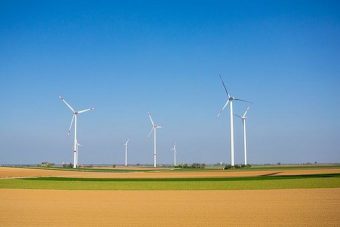
Wind power accounted for eight per cent of total US electricity generating capacity in 2016, according to the latest figures from the federal government’s Energy Information Administration (EIA).
The agency revealed yesterday that wind turbines have contributed more than a third of the near-200GW of utility-scale power capacity added across the country over the past decade, with more than half of US wind capacity located in just five states: Texas, Iowa, Oklahoma, California, and Kansas.
Texas alone accounts for almost a quarter of US wind capacity, delivering 13 per cent of the state’s electricity generation last year, the EIA added.
The figures also show that in three states – Iowa, Kansas and Oklahoma – wind makes up at least 25 per cent of in-state, utility-scale generating capacity, as Midwestern regions start to take advantage of favourable wind resources.
Overall, US wind capacity grew significantly from its 4.7 per cent share of net power generation the previous year, and 4.4 per cent in 2014.
The agency said the upsurge in US wind capacity reflected a “combination of improved wind turbine technology, increased access to transmission capacity, state-level renewable portfolio standards and federal production tax credits and grants”.
However, as of December 2016, there were still as many as nine US states with no operational utility-scale wind facilities whatsoever, including Alabama, Arkansas, Florida, Kentucky, Louisiana, Mississippi, South Carolina, and Virginia.
And, although wind makes up eight per cent of the total US generating capacity, it provided just five per cent of total US power generation in 2016 due to the capacity factors of turbines.
“Capacity factors, which measure actual output over a certain period as a percentage of the total ability of the turbine to generate given sufficient wind, average between about 25 per cent and 40 per cent for wind generators and vary based on seasonal patterns and geographical location,” the EIA explained.
Until late last year all US wind capacity was on land, but there are signs the US is now moving towards developing more offshore wind farms, with the country’s first offshore wind project entering into operation off the coast of Rhode Island in December 2016, according to the EIA.
Meanwhile, two further projects off the coasts of Ohio and Virginia are also seeking regulatory approval to proceed with development.
It follows EIA figures last year which showed US carbon emissions from energy during the first half of 2016 had reached their lowest level in 25 years.
Source: businessgreen.com



